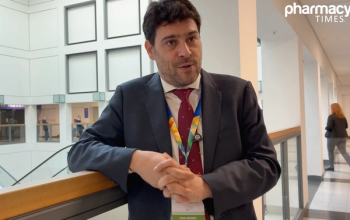
Practice Pearl 1: Identifying Patients and Regimens for Prophylaxis
Experts identify patients considered for prophylaxis care and discuss determining individualized regimens.
Luigi Brunetti, PharmD, MPH: When is a patient indicated for a prophylaxis? I know there are different strategies—primary, secondary, tertiary prophylaxis—but how do you determine what patient is the right candidate for starting prophylaxis?
Robert F. Sidonio, Jr, MD: The general recommendation is before age 3 and after their first joint bleed. We often are starting around age 2 at our center. It's just technically difficult to do. If anybody has children, you can imagine having a toddler and saying, "Yes, let's do prophylaxis." And you're going to have to hold them down, have 2 people hold them down because they become incredibly strong when you hold a child down. Starting an intravenous [IV] medication, and doing that 2 to 3 times a week, that's very technically difficult.
So a lot of the regimens, like the Swedish and the Dutch regimens, often start off slow. We often will start a 2-year-old on once-a-week therapy. And first of all, you just have to get the child used to the regimen because it's very emotionally draining. Some kids will sit there and you can stick them, and it's amazing. And other kids, they scream every time, even if it's their 50th attempt at doing it. They've been doing it for 3 years and they scream every time.
Families have to deal with this, and so we often start off at once a week, somewhere between 25 and 50 units per kg, so around 50% to 100% correction. And then we escalate as they start having more little hematomas, some minor bleeding events. And usually in the first couple of years, they're on twice-a-week therapy. And then eventually, you are trying to get to the goal of every other day, or 3 times a week. And of course, this is with standard half-life products.
And for the adults, for those who have come off of it for whatever reason or never were on prophylaxis, there are still pretty good data that there's benefit for them. Marilyn Manco-Johnson, MD, wrote a nice paper years ago on a study, and it showed improvement in quality of life, decreased bleeding, increased satisfaction and participation. It doesn't alter what damage you have in your joints, so that needs to be very clear to the adults, but at least it could halt the progression, which is important because you don't want to continue to have ongoing joint disease, which could lead to pain or very difficult surgeries. And obviously we don't want to have any incapacitation where they can't walk or do their daily activities. And so there's benefit for all age groups. You just have to have different goals of why you're doing it.
Luigi Brunetti, PharmD, MPH: There have been some interesting papers that have emerged. You mentioned the importance of easing patients and their caregivers into the dosing regimen and how frequently. There have been some interesting papers that have shown that in fact, patients and caregivers are willing to tolerate perhaps more bleeding with a simplified regimen, which is an interesting thing. And that ties in really with this paradigm shift that we're starting to experience in hemophilia in terms of what options are available to lessen the administration burden.
Robert F. Sidonio, Jr, MD: Up until recently, all the therapies were intravenous. And again, for a young child, it can be so traumatic to them to the point where every time they come to the clinic, they're screaming as soon as they see the nurse, and we don't want that obviously. So we often have the specialty pharmacies, and we often have our nurses associated with a 340B drug pricing program in Hemophilia of Georgia come out. We get them used to it, come up with strategies of how to deal with the infusions, whether it's a kid watching their favorite movie. Usually that's the time when you don't want to get too strict about candy. Just give them candy and let them do whatever they want. But kids like to follow routines, and so you need to keep them in the same routine. But it can be very difficult, and that's why it's important to have all the support from a big center that we have, and he has well.
Newsletter
Stay informed on drug updates, treatment guidelines, and pharmacy practice trends—subscribe to Pharmacy Times for weekly clinical insights.






















































































































































































































